Pronunciation:
(sen-TAHR-us)Abbreviation:
CenGenitive:
CentauriRight Ascension:
13 hoursDeclination:
-50 degreesArea in Square Degrees:
1060Crosses Meridian:
9 PM, May 20Visible Between Latitudes:
30 and -90 degreesThe constellation Centaurus, the centaur, is located in the southern hemisphere of the sky. It is visible at latitudes between 25 degrees and -90 degrees. It is a large constellation that covers an area of 1,060 square degrees. This makes it the ninth largest constellation in the night sky. It is bordered by the constellations Antlia, Carina, Circinus, Crux, Hydra, Libra, Lupus, Musca, and Vela.
Centaurus is one of the 48 constellations first identified by the second century Greek astronomer Ptolemy. It represents a centaur, a half man half horse creature from Greek mythology. It is an old constellation that dates back to the ancient Babylonians. They knew it as the Bison-man. It was depicted as a four-legged bison with the head of a man. The ancient Greeks identified it as a centaur, but it is not clear exactly which centaur it represents. It may represent Chiron who was accidentally wounded by Hercules. After his death, Hercules honored him by giving him a place in the stars. Under a dark sky, the outline of the constellation does indeed resemble a centaur. It is usually depicted as a centaur sacrificing an animal which is represented by the constellation Lupus, the wolf.
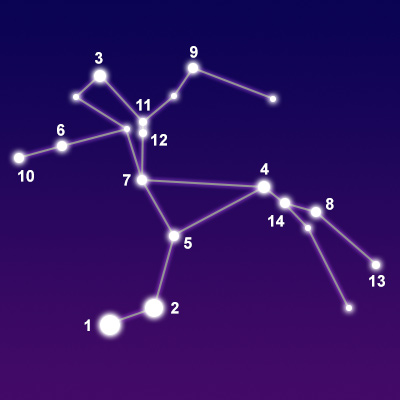
points of interest below © Sea and Sky
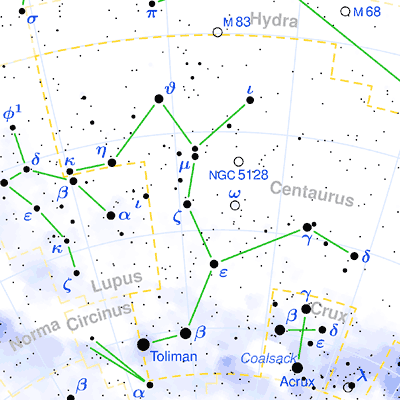
© Torsten Bronger CC BY-SA 3.0
Hadar
Menkent
Muhlifain
Epsilon Centauri
Eta Centauri
Alnair
Ma Wei
Alhakim
Ke Kwan
Nu Centauri
Mu Centauri
Pi Centauri
Sigma Centauri
"The Settled Land"
"Shoulder of the Centaur"
"Two Things"
N/A
N/A
"Bright Body Star"
"Third Star of Horse's Tail"
"The Wise One"
"Imperial Guards"
N/A
N/A
N/A
N/A
Blue Giant Star
Orange Giant Star
Double Blue Subdwarf Star
Blue-White Giant Star
Blue-White Dwarf Star
Binary Star System
Blue-White Subgiant Star
Blue-White Subdwarf Star
Blue Subdwarf Star
Blue-White Subgiant Star
Blue-White Subgiant Star
Binary Star System
Blue-White Dwarf Star
0.61
2.06
2.20
2.30
2.35
2.55
2.57
2.73
3.14
3.41
3.42
3.90
3.91
Centaurus contains several bright stars. It is probably most famous for the star Alpha Centauri, which is the closest star to our solar system. It also contains two of the ten brightest stars in the sky. The brightest star in the constellation is Rigel Kentaurus, also known as Alpha Centauri. It has a visual magnitude of -0.01 and is the third brightest star in the night sky. It is the closest star system to Earth at a distance of only 4.37 light years. The second brightest star in the constellation is Hadar. With a magnitude of 0.61, it is the tenth brightest star in the sky. It is a blue giant star located approximately 349 light years from Earth. Menkent is the third brightest star with a magnitude of 2.06. It is an orange giant star that lies about 60 light years away.
Centaurus contains no Messier objects but does have a few notable deep-sky objects. Centaurus A is the fifth brightest galaxy in the sky and one of the closest radio galaxies to our solar system. It is a lenticular or spiral galaxy seen edge-on. Its dark dust lanes are easily visible. Omega Centauri is a gigantic globular star cluster containing over 10 million stars. It is the brightest globular cluster as seen from Earth and one of the few globular star clusters bright enough to be seen with the naked eye. The Blue Planetary, also known as The Southerner, is the brightest planetary nebula in the southern sky. It can easily be seen in a small telescope. NGC 4945 is a spiral galaxy seen edge-on from Earth that can be seen in small telescopes. Centaurus contains a number of other dim galaxies, but these can only be seen with a large telescope.
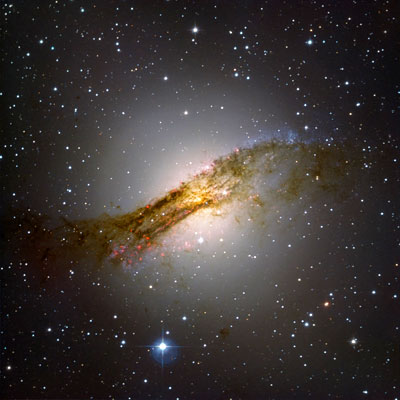
© ESO/SPECULOOS Team/E. Jehin / CC BY 4.0
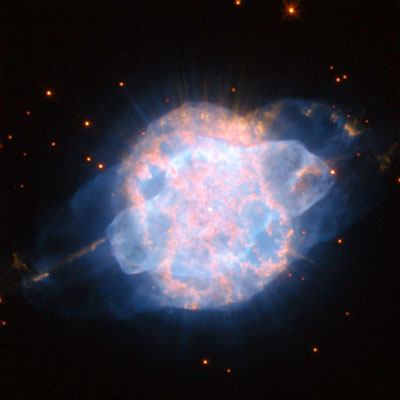
© ESA/Hubble and NASA / CC BY 3.0
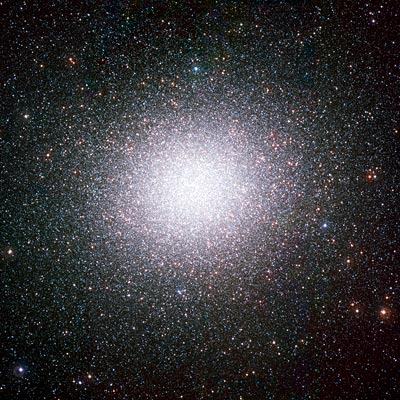
© European Southern Observatory / CC BY 4.0
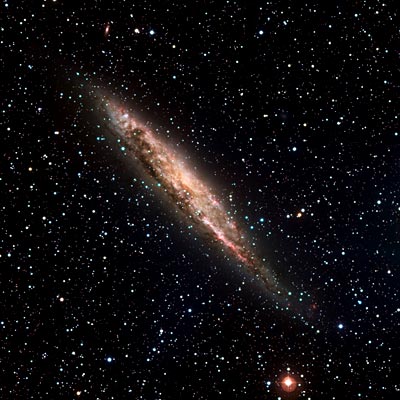
© European Southern Observatory / CC BY 4.0



